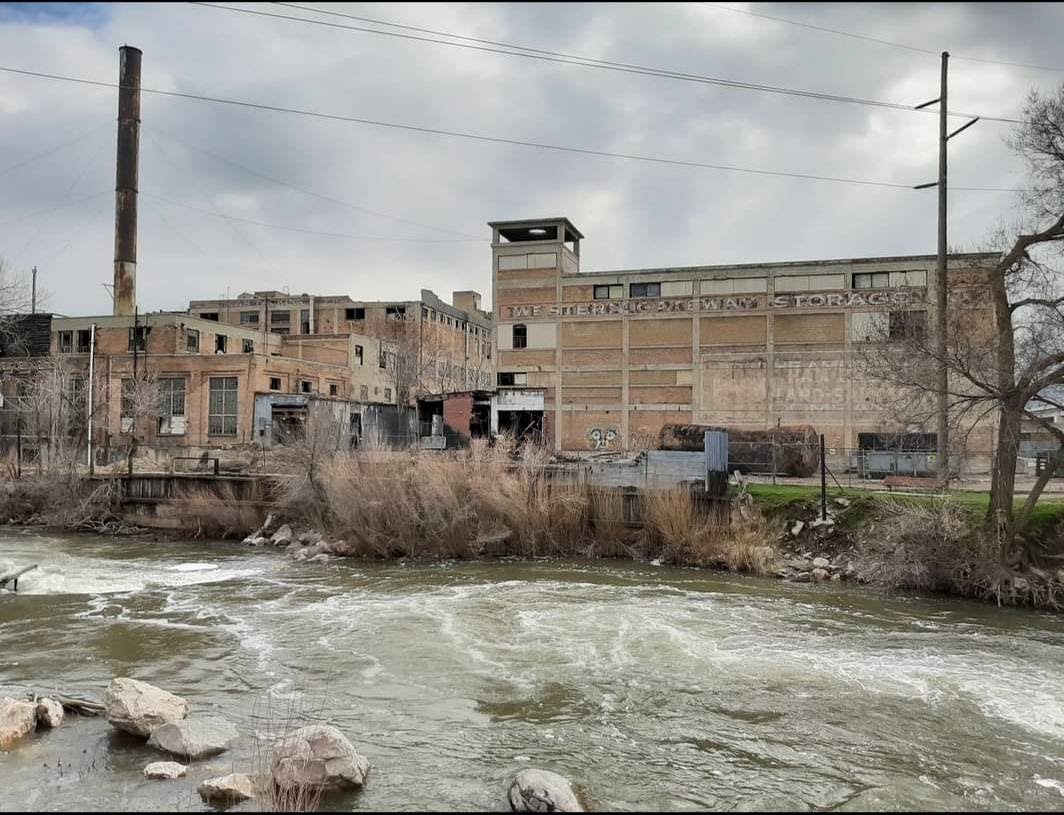Swift site cleanup costs grow after Weber River toxic spill averted
- EPA On-scene Coordinator Paul Peronard walks around the Swift Building on Wednesday, July 10, 2019, in Ogden.
- This undated photo shows the former Swift Building next to the Weber River in Ogden. The Swift Building was demolished in May 2020.
- Containers of tar sit on the grounds of the Swift building on Wednesday, July 10, 2019, in Ogden.
OGDEN — City officials are asking for another $2 million-plus for environmental cleanup at the Swift Building demolition site after the discovery of a leaking underground storage tank that threatened to break open into the Weber River.
The expenditure would raise to nearly $6.4 million the city’s expenses for buying the crumbling structure, cleaning out tons of toxic materials, demolishing the building and dealing with additional rounds of cleanup.
“What was underneath the building and the riverbed was really an extensive, unforeseen situation,” Brandon Cooper, the city’s Community and Economic Development Department director, told the city council in a work session on Tuesday.
The city bought the property, at 390 W. Exchange Road, in 2017, intending to redevelop the site as part of the 122-acre Trackline venture in West Ogden. But immediate redevelopment plans were shelved when the building’s interior revealed large amounts of stored chemicals, military surplus stockpiles and other toxic debris. The U.S. Environmental Protection Agency cleaned out the building in 2019.
Cooper said the EPA has informed the city that it spent $5.5 million on the cleanup. He said the EPA is negotiating with potentially responsible parties, which include the city’s Redevelopment Agency; the previous owner, Utah Smith LLC, a corporate entity connected to Bert Smith, the late founder of retailer Smith & Edwards Co.; the U.S. Department of Defense; and Smith & Edwards Co.
“We bought the problem, but the people who did the things that actually caused the problem, they’re still on the hook, aren’t they?” council member Richard Hyer asked.
While the city and its RDA indemnified Utah Smith LLC when it bought the site, “the EPA and the law still look at them as the responsible party,” Cooper said.
He said the city hopes to get concessions from the EPA because the city has acted for the sake of public health and safety by spending millions on the cleanup. “We are the good guy in this whole process,” he said.
After the 103-year-old Swift Building was torn down, the city discovered a storage tank under a concrete slab on the site’s southwest corner. Leakage of contaminants from the tank threatened the adjacent river, Cooper said.
Ben Nadolski, council chair, offered support for the work, noting that the riverbank abutting the tank was structurally failing. “There was a ton of risk there,” he said. “Eventually it would have failed and that would have been catastrophic.”
“It was leaking into the river and we would have never known that” had the city not continued to clean up the site, Cooper said.
Council members were taken aback by the mounting costs but voiced agreement that the cost should be borne.
“I hate having to come back with more and more and more,” Nadolski said. “I also hate the idea of not having done anything too.”
The costs “are a hard pill to swallow,” council member Angela Choberka said, “but it really freaks me out to know that was sitting there and what else could have happened.”
The new funding request, for $2.08 million, would be paid for with Business Depot Ogden lease revenues, if approved by the council at a later meeting. And it will not be the last. Cooper said the city administration will ask for another $500,000 for fiscal year 2023, followed by another probable mid-year funding request once the year’s ongoing cleanup work’s needs and costs are updated.
Cooper said the city next needs certification by state environmental officials for further planned cleanup. Then, holes to be drilled around the 7-acre site will determine whether there are additional contaminants. “If it’s in the soil, we’ll just dig it up,” he said. “If it’s in the groundwater, we just monitor it.”
If monitoring wells are needed, he said, “We trust that it would require a long-term monitoring plan.”
Negotiations with a developer for the Smith property fell through as the cleanup widened. Cooper said the city will not pursue a new development deal until the cleanup winds down.
Council member Marcia White said the next owner will be “getting a great deal on both ends. We’re cleaning it up and they’re getting a great deal on the opportunity zone.” She was referring to tax breaks that developers get when working in blighted areas designated as federal opportunity zones.
Cooper said the city will end up selling the property for $1.6 million to $2.3 million, depending on market conditions. Answering White, he said, “Yes, whoever would purchase it would likely see the tax benefits associated with it.”
The Swift Building’s meatpacking plant operation was the core of a bustling stockyards district a century ago. But after the stockyards and plant closed in the 1970s, the area declined, until the Trackline development took form in 2013.






